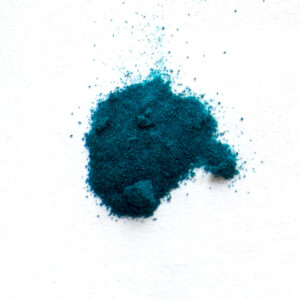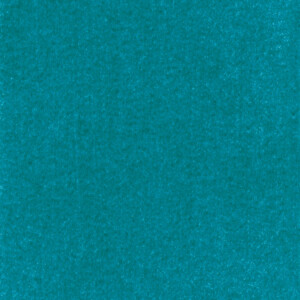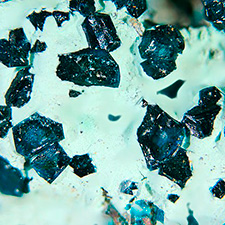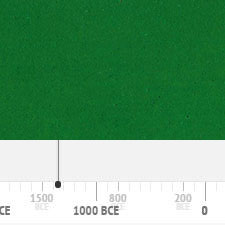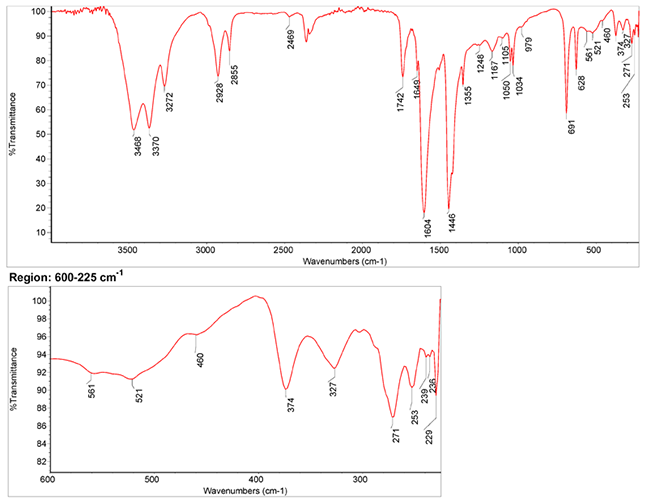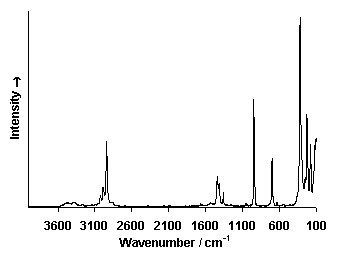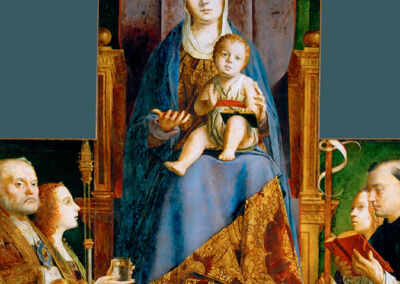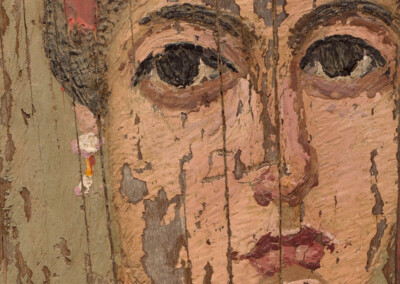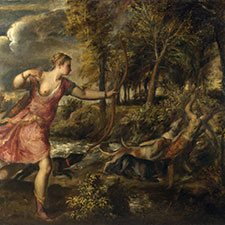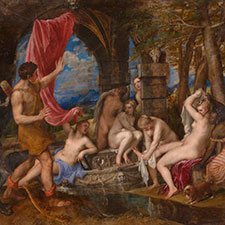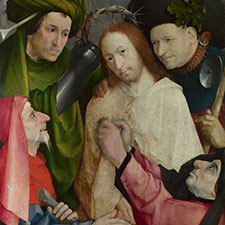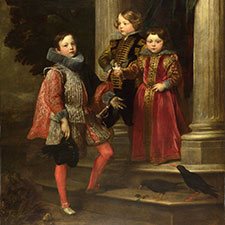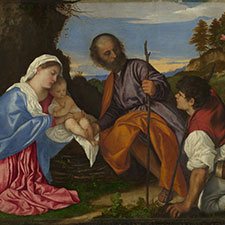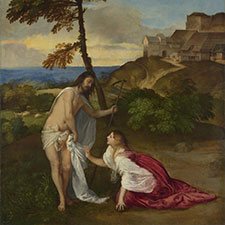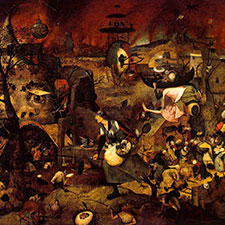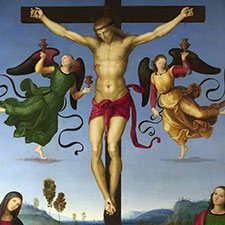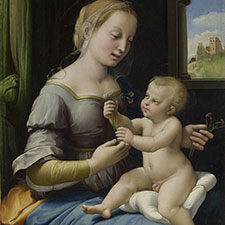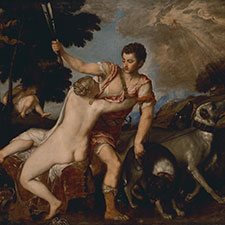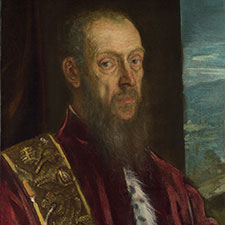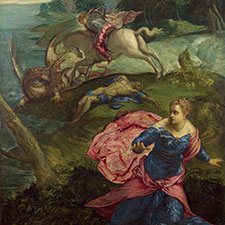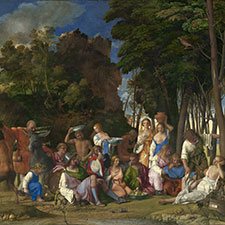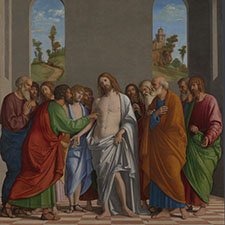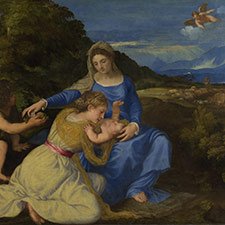Verdigris
Artificial inorganic pigmentComposition and Properties of Verdigris
Verdigris is not a unique chemical substance but is a collective name for various copper acetates. Their color varies from blue to green.
It reacts with binding media such as oils and resins and forms transparent oleates or resinates. This property has been utilized for preparing transparent green glazes called copper resinates by dissolving verdigris in warm turpentine resin mixed with mastic and wax.
Neutral verdigris is neutral copper acetate with the formula Cu(CH3COO)2·H2O. It can be prepared by solving basic verdigris in acetic acid.
Basic verdigris can contain several forms of copper acetates such as [Cu(CH3COO)2]2·Cu(OH)2·5 H2O or Cu(CH3COO)2·Cu(OH)2·5 H2O which are both blue. The following copper acetate shows green color: Cu(CH3COO)2·[Cu(OH)2]3·2 H2O.
The pigment, in general, is not very stable and decomposes on heating, they are soluble in dilute acids and react with alkalis forming copper hydroxide. The painting materials change their color from blue-green to green with time for approximately one month. It had also a bad reputation for insufficient lightfastness but newer experiments do not confirm this fact. The pigment darkens when mixed with sulfur-containing pigments such as ultramarine or orpiment.
Copper acetate also occurs naturally as the rare mineral hoganite.
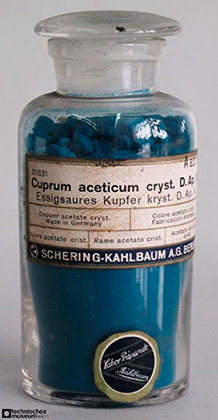
Bottled pigment
References
(1) Marion Alter, Laurent Binet, Nadia Touati, Nadège Lubin-Germain, Anne-Solenn Le Hô, François Mirambet, Didier Gourier, Photochemical Origin of the Darkening of Copper Acetate and Resinate Pigments in Historical Paintings, Inorg. Chem. 2019, 58, 19, 13115-13128. https://doi.org/10.1021/acs.inorgchem.9b02007
Names
Alternative names
Copper rust, Spanish green
Color Index
PG 20, CI 77408
Word origin
Vertegrez, from Old French verte grez (13c.), verte de Grece (late 12c.), literally “green of Greece,” from obsolete French verd, from Latin viridis
From Online Etymology Dictionary
Grünspan
German
Vert-de-gris
French
Verderame
Italian
Cardenillo, verdete
Spanish
Preparation
Basic verdigris can be prepared by bringing copper in contact with acetic acid vapor, water vapor, and air. The neutral pigment is formed by dissolving basic verdigris in acetic acid.
Illustrated instructions for the preparation of this pigment together with historical recipes can be found in Travelling Scriptorium by the Yale University Library.
Video: 'Making the Pigment' by ptJorel
References
(1) Sally D. Solomon, Susan A. Rutkowsky, Megan L. Mahon, and Erica M. Halpern, Synthesis of Copper Pigments, Malachite and Verdigris: Making Tempera Paint, J. Chem. Educ., 2011, 88 (12), pp 1694–1697, DOI: 10.1021/ed200096e
History of Use
Verdigris has been in use since prehistoric times until the present day. It was employed for green tones in landscape or interior paintings as it was the most intense green pigment at the time of the renaissance. With the arrival of modern green pigments such as emerald green and viridian the use of verdigris ceased. The following graph gives the frequency of its use in the paintings of the Schack Collection in the Bavarian State Art Collections in Munich (1).

An extensive collection of occurrences of verdigris in paintings from several historical periods can be found in the blog post ‘Pigment: Copper rust, Verdigris and Copper Resinate by The Eclectic Light Company.
References
(1) Kühn, H., Die Pigmente in den Gemälden der Schack-Galerie, in: Bayerische Staatsgemäldesammlungen (Ed.) Schack-Galerie (Gemäldekataloge Bd. II), München 1969.
Examples of use
Jan Van Eyck, The Arnolfini Portrait, 1434

Rogier van der Weyden, The Magdalen Reading, before 1438
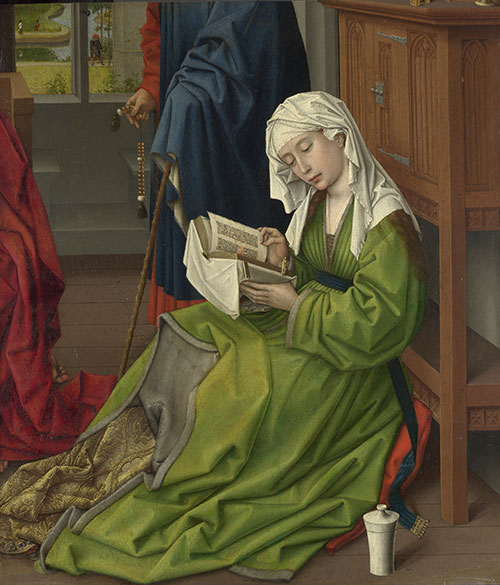
1 The Magdalen’s green robe: the underlayer consists of verdigris, lead white and lead-tin yellow. The upper layer is painted in lead-tin yellow and verdigris in varying proportions with more lead-tin yellow in the highlights and more verdigris in the shadows.

Hieronymus Bosch, ‘The Crowning with Thorns (Christ Mocked)’, ca 1490-1500
Raphael, ‘Saint John the Baptist Preaching‘, ca 1505

6 The green drapery of the sitting man: verdigris.
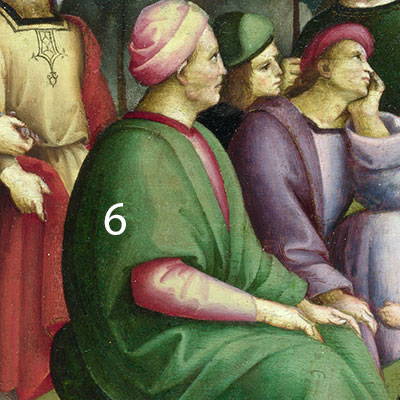
Identification
Fiber Optics Reflectance Spectra (FORS)
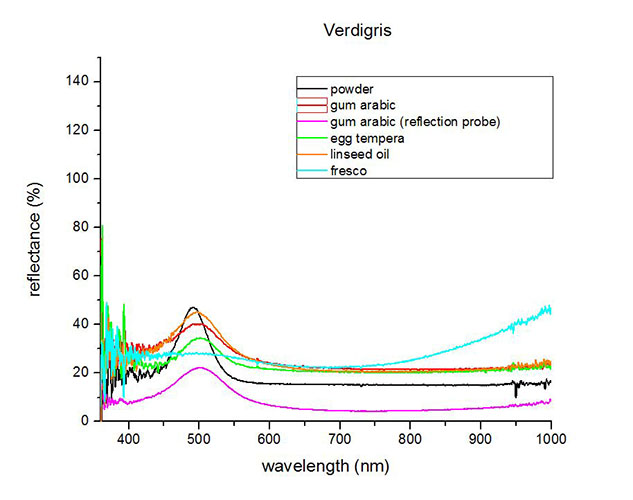
Spectra by A. Cosentino, Cultural Heritage Science Open Source (CHSOS)
Infrared Spectrum
1. IR-Spectrum in the ATR-FT-IR spectra of different pure inorganic pigments, University of Tartu, Estonia
2. Spectrum of verdigris in linseed oil by S. Vahur, Database of ATR-IR spectra of materials related to paints and coatings, University of Tartu, Estonia
Raman Spectrum
Spectrum by Ian M. Bell, Robin J.H. Clark and Peter J. Gibbs, Raman Spectroscopic Library
University College of London
X-Ray Fluorescence Spektrum (XRF)
XRF Spectrum in the Free XRF Spectroscopy Database of Pigments Checker, CHSOS website.
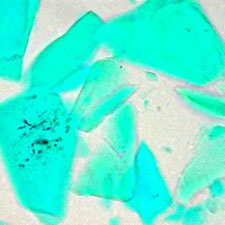
Microphotograph
image © Volker Emrath
Further Reading
References
(1) H. Kühn, Verdigris and Copper Resinate, in Artists’ Pigments. A Handbook of Their History and Characteristics, Vol. 2: A. Roy (Ed.) Oxford University Press 1993, p. 131 – 158. Available as pdf from the National Gallery of Art.
(2) Schweizer, F. und Mühletaler, B. Einige Grüne und Blaue Kupferpigmente, Farbe und Lack, 74 1968, p. 1159-73.
(3) Kühn, H., Grünspan und seine Verwendung in der Malerei, Farbe und Lack, 70, 1964, p. 703-711.
(4) Renate Woudhuysen-Keller, Aspects of Painting Technique in the Use of Verdigris and Copper Resinate, in Historical Painting Techniques, Materials, and Studio Practice, Symposium of Getty Conservation Institute at the University of Layden, 1995, pp. 65 – 69. Available as pdf.
(5) S. Muntwyler, J. Lipscher, HP. Schneider, Das Farbenbuch, 2nd. Ed., 2023, alataverlag Elsau, pp. 86-87.

